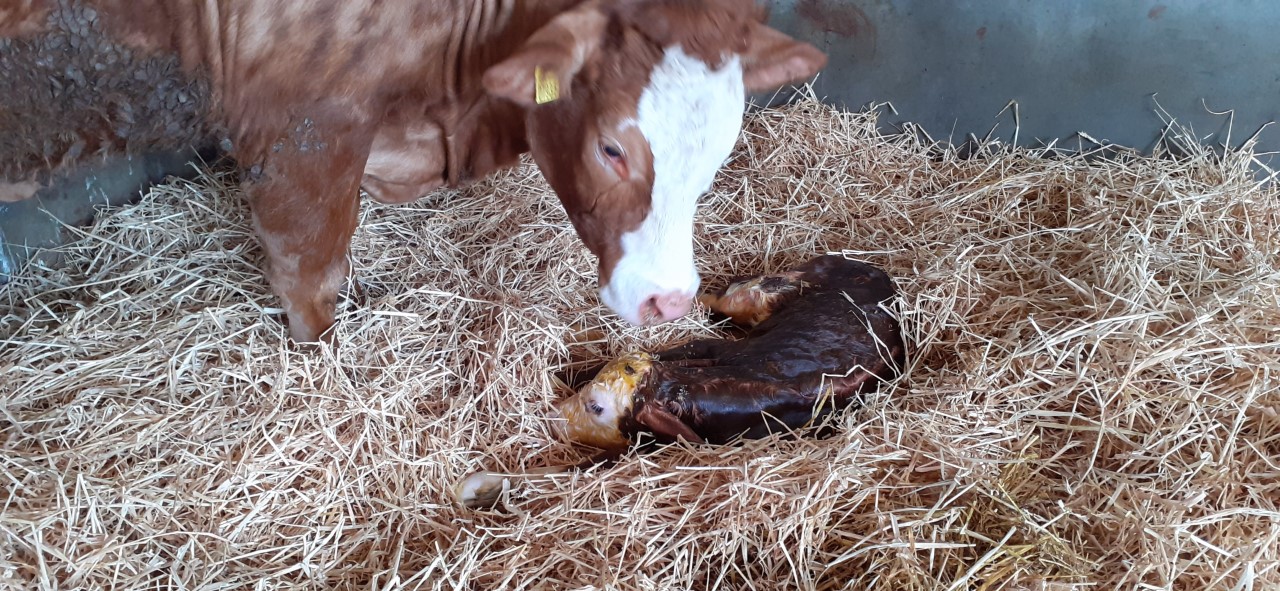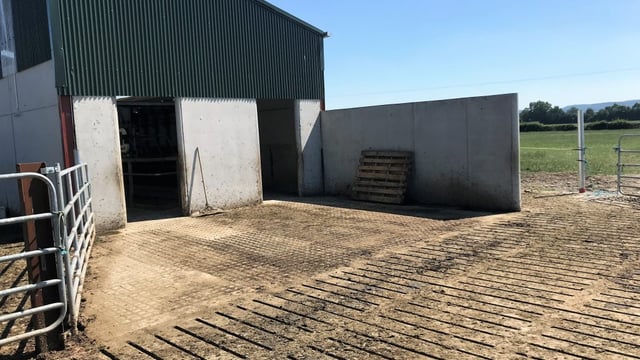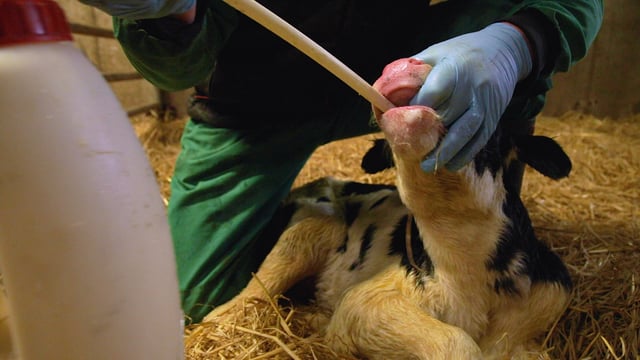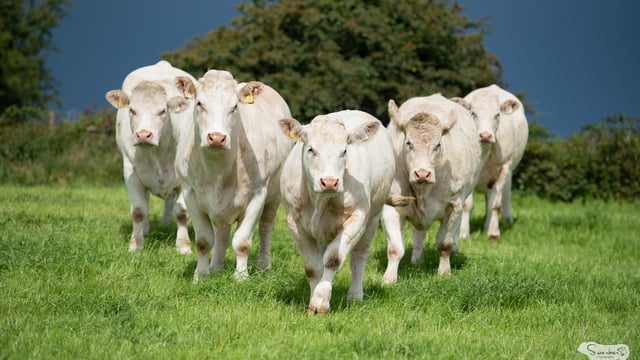CAFRE tips to ensure a healthy calving season
The Department for Agriculture, Environment and Rural Affairs (DAERA) has shared advice from a College of Agriculture Food and Rural Enterprise (CAFRE) advisor on how to achieve a healthy calving season within the suckler herd.
Dominic Mason, a CAFRE beef and sheep advisor, labelled calving season as one of the busiest and most stressful times on the farm.
Day and night checks lead to sleepless nights which, he said, can lead to things being missed or forgotten about.
Mason explained the target for BCS at calving is 2.5-3 and that anything lower than that can have an impact on return to oestrus and potential colostrum quality.
A higher BCS could result in difficult calving and subsequent slower return to oestrus.
"Target dry cows with silage quality that is suitable for her stage of pregnancy. Average quality silage with a 65+ D-value fed ad-lib should be adequate," Mason said.
"Appetite decreases closer to calving, so make sure energy and protein content is suitable for this period. Protein is important especially for the production of antibodies, which the calf will absorb during feeding from good quality colostrum.
"Anti-scour vaccines should be given well in advance of calving making sure to follow manufacturers' guidelines."
Mason explained that the vaccines will only be of benefit if the newborn calf receives adequate colostrum from its vaccinated mother, otherwise known as passive immunity.
His advice is that dry cow minerals are important and should be fed for at least 6-8 weeks prior to calving.
"Supplementation of these minerals will aid in reducing problems around calving such as retained placentas etc.," Mason added.
"A few days prior to calving, try to have the cows on straw close to the calving pens in an effort to reduce the stress of moving at the time of calving. This will also increase hygiene levels at the point of calving with cows on fresh clean straw."
Mason explained that adequate calving pens are essential at this time of year. The recommendation is one calving pen per 10 cows for a 12-week calving period.
"Proper cleaning and disinfecting needs consideration with a good supply of clean dry bedding at all times," he said.
"A calving gate is a must on all farms that are calving cows as health and safety is paramount for everyone involved," he added.
He said that a calving gate should be hung in such a manner that the left hand side of the cow can be accessed in the case of a caesarean. Hanging this way also leaves the facilities better suited for right-handed workers.
"Have facilities available to allow easy access to fresh hot and cold running water for hygiene purposes. Again, a must in a situation where a caesarean is required."
Mason explained that once calved, farmers should dip or spray the calf's navel with iodine to cleanse and start the dehydration process of this open wound allowing it to close over.
He advised to get the calf suckling the dam as soon as possible after birth and highlighted the importance of sufficient colostrum consumption within the first 4-6 hours after birth to build up the calf's immune system.
"After this time, the calf's ability to absorb these antibodies decreases and ceases around 24 hours after birth. Passive immunity depends on the colostrum/antibody volume consumed," he said.
"Ideally have the calf sucking to stimulate the sucking reflex and bond between cow and calf. If not possible, milk the cow's colostrum by hand into a clean jar and bottle feed it using a teat or use a stomach tube if required.
"Watch the calf to make sure that it is in fact getting onto the teat and sucking. In most cases the calf will suck everything from the cow's brisket to her tail before it actually gets onto the teat and gets a belly full of colostrum," Mason added.
In this situation the calf can ingest faeces, containing disease causing bacteria before it has had a chance to consume the antibody rich colostrum.
When it comes to diagnosing problems, Mason said, records are invaluable.
"Records mean everything at this time of year. Record as much as you can including calving duration, time to get up and suck, as well as time spent sucking," he said.
"Attention to detail is key. Keep an eye on the newborn calf and make sure the bond is there with the cow and the calf is sucking regularly. Especially with heifers."
He advised to have on-hand items such as a thermometer to check temperatures and electrolytes in the case of a calf dehydrating.
"In cases where faecal or blood samples are recommended to be taken from the calf by your vet, take the advice as you never know what can show up."







